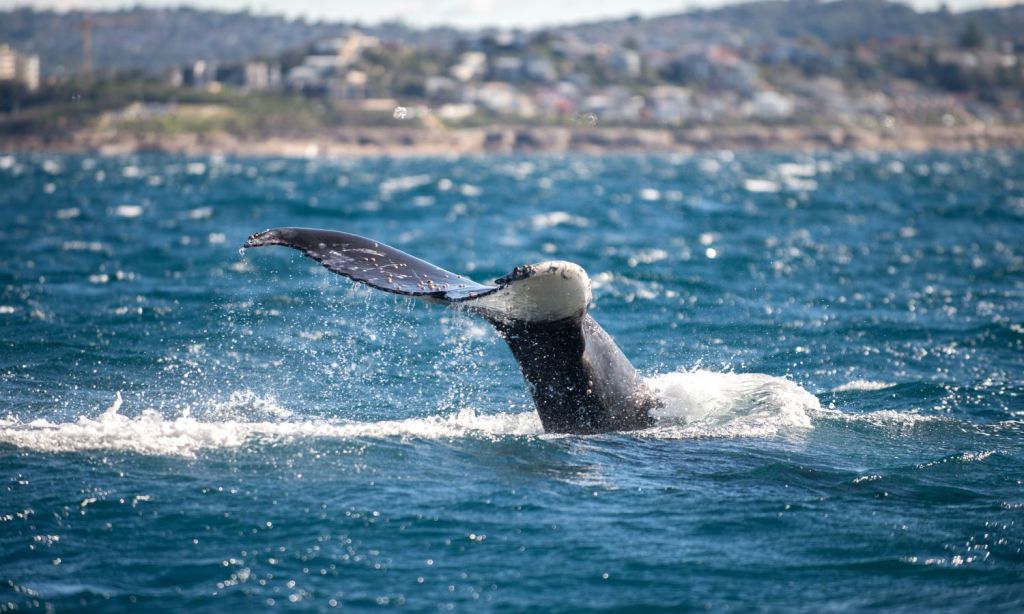Whale season is the silver lining of winter. Sure, it’s cold, raining, and becoming increasingly difficult to de-doona yourself in the mornings but, hey, at least there are some huge and mysterious sea creatures cruising along the coastline.
Every year, humpbacks and other whales migrate from the cold southern seas to warmer northern climes to give birth. On their journey, they pass within eye-shot of the east coast of Australia, drawing thousands of people to the shoreline to catch a glimpse of them.
Ahead, we answer all your questions about whale season in Sydney. So, instead of scrolling on your phone, you could be looking at vast, ancient water beings flopping around in the sea instead. Up the awe in your life by getting close to whales, here’s how.
When Is Whale Season?
In Sydney, May to September is whale season. In the winter, whales travel along the coastline, with peak sightings happening at the end of June and the start of July.
Whales make an annual migration of roughly 10,000 km north to warmer waters of the Kimberly region and the Great Barrier Reef to give birth, as their usual habitats are too cold for calves.
Once they’ve given birth, they head back down the coast at the end of the season, around August. However, when they come back this way, they tend to follow the southerly currents of the deep ocean and so are much further from the coastline, making them harder to spot.
The end of the season, around November, is when you’ll see mothers moving slowly down the coast with their newborn calves. They can come very close to the coastline and are great fun to spot.
What Types of Whales Are There in Sydney?
Australia is home to 45 whale species living in our waters at various times of the year. Over 50% of the global whale population is found off the coast of Australia.
However, the most commonly sighted species in Sydney are humpback whales and minke whales. The latter are smaller and elusive, so are much harder to spot. Humpbacks frequently launch themselves out of the water, making for very easy sighting.
You can also see Southern Right Whales, which don’t migrate and are infrequently spotted. Once in a blue moon, you may also catch a Blue Whale, the largest animal to have ever lived on Earth, but these are very rare indeed.
Where Is the Best Whale Watching in Sydney?
Getting anywhere coastal in Sydney during whale season gives you a good chance of seeing whales if you sit and watch the ocean for long enough. However, some areas make for better viewing platforms than others.
Barrenjoey Lighthouse, at the very northern tip of the Northern Beaches, makes for an optimal spot given its height and positioning out into the ocean.
The Northern Beaches are packed with spots that make for good whale watching. Careel Headland Reserve Lookout is a locally famous spot where you can comfortably spend hours staring out into the blue, watching the whales pass by. Long Reef Headland is an equally good spot with a dedicated lookout platform perfect for whale watching.
Further south, you’ve got North Head, which typically offers a great vantage point. However, at the time of writing, Fairfax Walk, which takes you right to the edge of the cliff, is temporarily closed.
On the south side of the bridge, the cliff-top headlands from South Head down to Bondi make for optimum viewing. The lookout at Ben Buckler is a classic spot for whale watching and comes with sweeping views of Bondi Beach, as well.
Further south you’ve got Malabar Headland, just a short walk from Maroubra Beach, which gives you a great view into the ocean and along the ‘whale highway’. Beyond that, the Royal National Park is your best bet, with its cliffside walks giving sustained whale-watching opportunities.
For optimal viewing, head out in the early morning when whale tails and spray are lit from behind by the sun, making them easier to spot. Don’t forget to bring a pair of binoculars to make sure you get a good glimpse.
Related: What’s Behind the Korean Cuisine Boom in Sydney?
Related: Save Time and Money, and Experience Hidden Gems By Hopping on One of These NSW Tours
Read more stories from The Latch and subscribe to our email newsletter.

